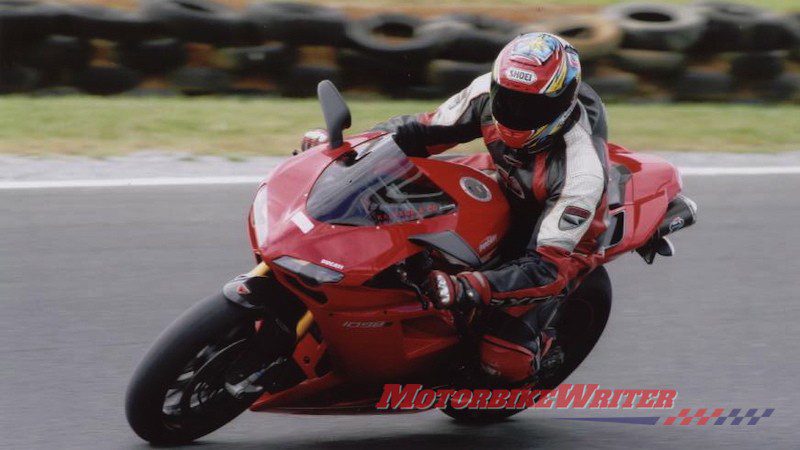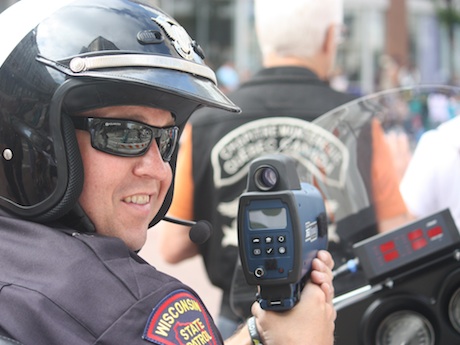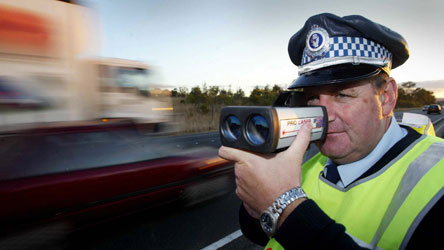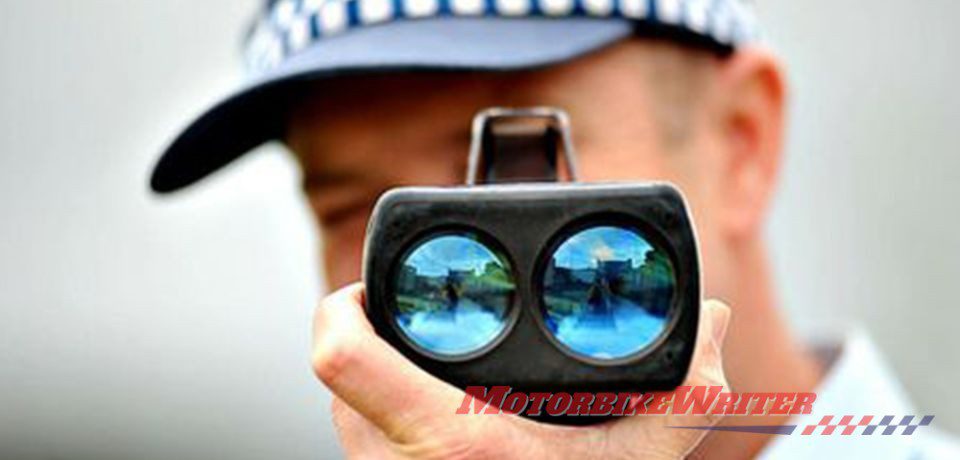Speeding fines based on Lidar or radar readings are difficult to defend, but not impossible, says NSW traffic and criminal law specialist Chris Kalpage.
The Ducati-riding solicitor has previously provided our readers with tips on what to do when pulled over by police and defences to speeding fines based on a police officer’s estimate or “check speed”.
Check out his tips on defending a Lidar or radar speeding fine:

Lidar readings
Lidar speed readings are potentially more accurate than “check speeds” and police estimates which were covered in my previous article.
So they need more careful analysis prior to any court hearing.
“LIDAR” stands for Light Detection and Ranging which means it uses pulsed lasers of light.
Police aim the hand-held Lidar device at an object and a laser beam of light bounces back and forth to measure changes in the distance over time.
It is the most accurate form of speed assessment.
Radar devices work the same way, but use radio waves instead of light.
Calibration
However, like any measuring instrument, these can be compromised depending on calibration and manner of use.
Failure to produce a S137 Road Transport Act certificate at a hearing could call into question the reading obtained.
We also consider whether the device has been properly calibrated. The prosecution would have to produce a certificate signed by the police officer at the start and end of their shift certifying the device was tested over a measured prescribed distance of 25m and 50m.
Each Lidar has a prolaser testing book, which is completed and signed off when the tests are done.
Lidar use

We also consider the use of the Lidar on a motorist.
- Was there a clear line of sight for the officer during the duration of the test?
- Was the required three-second observation and testing likely, based on available distance for the test and the alleged speed? For example if the maximum sighting distance from the officer is 30m and you are meant to be travelling at 30m/second they only have one second to conduct the test which is insufficient time.
- Was there excessive movement of the unit?
- Is there the potential for the laser to be reflected back from another surface?
Radar devices
If the radar device uses a Doppler beam, we again consider calibration.
However, there are other contentious issues with a Doppler beam as they are much wider than a Lidar beam.
The old Silver Eagle Radar used to have a beam of about 20x20m for every hundred metres of projection.
This creates confusion over which vehicle provided the speed reading.
I have run cases where a small vehicle such as a motorcycle was traveling in front of a speeding four-wheel drive and may not be the vehicle giving the speed reading.
Police always argue that if there are multiple vehicles in the beam then an error reading should show on the device but that is subject to question and scientific challenge.
We also consider whether there were multiple vehicles in the beam and whether there were many vehicles of a similar size. This raises the question of identity of the offending vehicle.
Use of mobile radars in areas where traffic isn’t sparse raises the issue of target identification.
Use guidelines

Guidelines for the use of Lidar and radar have previously contained prohibitions such as at the bottom of a hill or within 50m of a change in speed zone sign.
Those restrictions on police have now been considerably eased in many jurisdictions, despite public criticism.
However that information may be relevant in a defence or in a plea of guilty.
Also, keep in mind that both these devices can be used in approaching or receding mode, which means they can hide in the bushes and activate the device once you have gone past them and shoot you from behind.
When defending these cases, especially the Lidar, some magistrates wish to have scientific evidence from the defence supporting the basis of the challenge to the instrument.
Disclaimer
This article is for reader information and interest only and is based on New South Wales law. It is not intended to be comprehensive, and does not constitute and must not be relied on as legal advice.
Please be aware that every case is different and the matters raised may not be of specific relevance to your situation but may have a general application. You must seek specific advice tailored to your circumstances. Chris is happy to talk to anyone needing clarification. He can bet contacted on 0418 211074.


